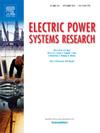多区域电力系统动态频率恢复储备量纲的潜在效益评估
IF 3.3
3区 工程技术
Q2 ENGINEERING, ELECTRICAL & ELECTRONIC
引用次数: 0
摘要
本文研究了动态频率恢复储备(FRR)分配和量规在多区域背景下的潜在好处,重点是北欧负载-频率控制块。重点放在可用信息如何影响FRR维度。为了评估潜在的效益,提出了一个适用于静态和动态维数方法的多区域FRR维数模型。提出的FRR量纲模型包括一种新的方法来模拟不平衡情景,并依次为参考事件和正常不平衡的FRR容量量纲。动态FRR量纲的主要好处是,对FRR容量的需求是根据预期的短期运行条件不断更新的,这样每天的可靠性水平总是接近期望的可靠性水平。实例研究结果表明,与静态方法相比,动态FRR维度可以减少总储备需求。如果FRR是在前一天市场出清后计算的,那么这种减少会明显更大。本文章由计算机程序翻译,如有差异,请以英文原文为准。
Assessing potential benefits of dynamic frequency restoration reserve dimensioning in multi-area power systems
This article investigates the potential benefits of dynamic Frequency Restoration Reserve (FRR) allocation and dimensioning in a multi-area context, focusing on the Nordic Load-Frequency Control block. Emphasis is placed on how the available information impacts the FRR dimensioning. To assess the potential benefits, a model for multi-area FRR dimensioning is proposed, applicable to both static and dynamic dimensioning approaches. The proposed FRR dimensioning model includes a new application of a methodology to simulate imbalance scenarios and sequentially dimensions FRR capacity for reference incidents and normal imbalances. The main benefit of dynamic FRR dimensioning is that the need for FRR capacity is continuously updated according to the expected short-term operating conditions, such that the daily reliability level is always close to the desired reliability level. Case study results show that dynamic FRR dimensioning can lead to a reduction in total reserve needs compared to a static approach. This reduction is significantly larger if FRR is dimensioned after the clearing of the day-ahead market.
求助全文
通过发布文献求助,成功后即可免费获取论文全文。
去求助
来源期刊

Electric Power Systems Research
工程技术-工程:电子与电气
CiteScore
7.50
自引率
17.90%
发文量
963
审稿时长
3.8 months
期刊介绍:
Electric Power Systems Research is an international medium for the publication of original papers concerned with the generation, transmission, distribution and utilization of electrical energy. The journal aims at presenting important results of work in this field, whether in the form of applied research, development of new procedures or components, orginal application of existing knowledge or new designapproaches. The scope of Electric Power Systems Research is broad, encompassing all aspects of electric power systems. The following list of topics is not intended to be exhaustive, but rather to indicate topics that fall within the journal purview.
• Generation techniques ranging from advances in conventional electromechanical methods, through nuclear power generation, to renewable energy generation.
• Transmission, spanning the broad area from UHV (ac and dc) to network operation and protection, line routing and design.
• Substation work: equipment design, protection and control systems.
• Distribution techniques, equipment development, and smart grids.
• The utilization area from energy efficiency to distributed load levelling techniques.
• Systems studies including control techniques, planning, optimization methods, stability, security assessment and insulation coordination.
 求助内容:
求助内容: 应助结果提醒方式:
应助结果提醒方式:


